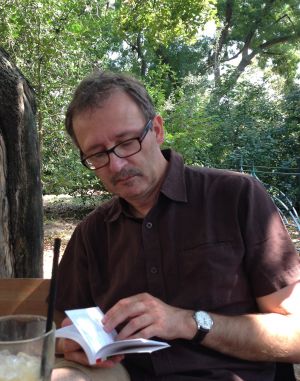Multimodal Stancetaking: Expressive Movement and Affective Stance: Political Debates in the German Bundestag and the Polish Sejm
Parliamentary speeches have aroused interest of researchers not only for their content and potential influence on the fate of ordinary people, communities, nations, and entire countries. In order to achieve their goals, politicians consciously employ their rhetorical skills but, as they are also profoundly engaged in the discussed issues, their speeches often become highly emotional as well. This is clearly reflected in the way they speak and in their gestural behaviour and the dynamics of facial expression.
Our project advances a new framework to multimodal stancetaking. Initially developed as a theoretical and analytical concept for the analysis of metaphorical meaning-making in audiovisual media and in face-to-face interaction (Kappelhoff & Müller 2011; Müller & Kappelhoff 2018), expressive movement is the pathway we are offering to explain how stancetaking as a multimodal activity becomes a temporally-structured affective experience. By integrating ‘objective’ measures of speech prosody with the analysis of gesture (Karpiński et al. 2008; Karpiński 2009; Karpiński & Jarmołowicz-Nowikow 2010; Malisz & Karpiński 2010; Czoska et al. 2015; Karpiński i & Klessa 2018), body posture, head movements and speech on micro-, meso-, and macro levels of temporal unfolding of political speeches, a new angle is provided on the analysis of multimodal stancetaking as ‘expressive movement’. Despite the abundant and diverse literature on stance and stancetaking the role of gesture and body movement as well as prosodic properties of this communicative activity remain hitherto only scarcely studied.The project thus fills a gap and responds to the challenge of including multimodality in stancetaking research across different disciplinary fields. It addresses stancetaking as multimodal embodied process and investigates its realization in political debates in German and Polish parliaments. The project focuses on dynamic gestural patterns along with body-postures, head movements, and concomitant speech, including its prosodic properties, as ‘multimodal’ expressive movements (Kappelhoff & Müller 2011).
Methodology and added value of bilateral cooperation. The study will be based on a collection of recordings of political speeches. Stancetaking will be analyzed on the level of ‘expressive movement units’ (Kappelhoff & Bakels 2011; Müller & Kappelhoff 2018).

Maciej Karpiński is a phonetician and a psycholinguist doing research in the perception and pragmatic aspects of speech prosody, paralinguistic features of speech, multimodal communication, and exploring links between speech and music. He received a PhD in general linguistics (1998) and a habilitation degree in applied linguistics (2007) from Adam Mickiewicz University in Poznań. Head, team leader or principal investigator in a number of research projects in the area of prosody and multimodal communication, e.g., Borderland: Boundaries of Language – Language of Boundaries. Paralinguistic Aspects of Intercultural Communication; NeuroPerKog: Phonological hearing and working memory development in infants and children, PAGE: Prosodic and Gestural Entrainment in Conversational Interaction across Diverse Languages; DiaGest2: Verbal and Non-verbal Interaction in Task-oriented Dialogues. Models of multimodal dialogue acts; Pol’n’Asia: Intonation and Tone in Korean, Polish, Thai and Vietnamese Task-oriented Dialogues, PoInt: Polish Intonation Database. He also took part in projects dedicated to endangered languages and cultures, and to linguistic resources (COLING, Heritage: Linguistic Heritage of Rzeczpospolita. Documentation base for endangered languages; INNET: Innovative Infrastructure for Endangered Languages). Presently, he is the Head of the Department of Multimodal Communication at the Institute of Applied Linguistics, Adam Mickiewicz University in Poznań.
Project funded by the Polish National Science Foundation 2018/31/G/HS2/03633